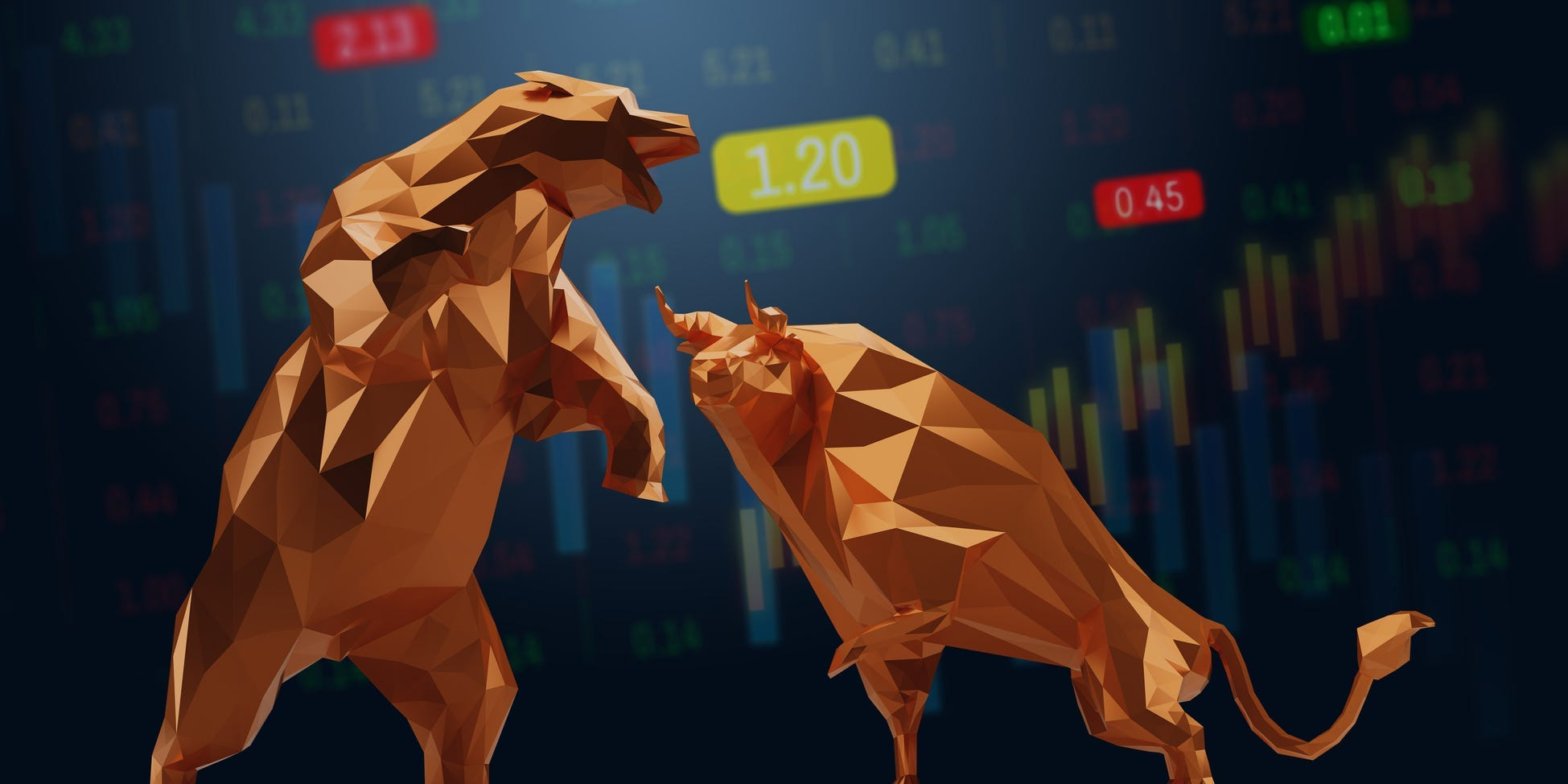Fed Chair Jerome Powell may keep interest rates higher for longer, biting into company profits. Stocks across the market have seen lower returns on equity this year, according to Goldman Sachs. But 21 companies can handle the restrictive monetary policy and provide investors with stability. The Federal Reserve’s higher-for-longer monetary policy has had an enormous ripple effect over the last few weeks — but its biggest impact will be on the bottom lines of companies across the market.
According to a recent note from Goldman Sachs chief US equity strategist David J. Kostin, over the last few decades stocks have enjoyed strong return on equity (ROE), a common measurement of a company’s profitability and efficiency.
“Since 1975, falling interest expense and greater leverage have contributed 18.5 pp of the overall 8.8 pp increase in S&P 500 ROE, while lower taxes have contributed 8.9 pp, higher EBIT margins contributed 5.9 pp, and lower asset turnover contributed -24.5 pp during the same period,” Kostin wrote. “A recent Fed paper similarly found that lower interest expenses and corporate tax rates explain more than 40% of the real growth in corporate profits from 1989 to 2019.”
Now, the Fed has thrown a wrench into things.
Higher interest rates and lower leverage are a double whammy for stocks, according to Kostin. He noted that borrowing costs have seen their biggest increase in nearly 20 years during 2023, which will mean fewer reasons for companies to borrow money to fuel their growth, weighing on profitability.
“If rates continue to rise or stay higher for longer, increased borrow costs would disincentivize companies to take on greater amounts of leverage,” he wrote.
Markets Insider The result has been lower ROE across the market this year.
“S&P 500 ex-Financials trailing four-quarter return on equity (ROE) equals 23.4%, 69 bp lower than at year-end 2022 and 176 bp below its peak in 2Q 2022,” Kostin wrote.
Goldman Sachs Kostin broke that decline down even further, noting that, of the 69 basis-point decline this year, 31 basis points were directly attributable to higher interest expenses.
“Interest expense also dragged down ROE across every sector this year with Financials experiencing the largest drag (-159 bp) and Energy the smallest (-5 bp),” Kostin wrote. “Reduced leverage, lower asset turnover, and a contraction in EBIT margins also weighed on S&P 500 ex-Financials ROE, contributing -42 bp total.”
He excludes financials from the equation because most of the ROE increase in that sector can be attributed to the investment income of one company — Berkshire Hathaway — which skews the data.
How to invest as Jerome Powell squeezes your portfolioHigher interest rates will lower profitability going forward, but there are some bright spots in the market.
Kostin pointed out that ROE actually rose in six of the 11 sectors across the S&P 500 this year, with the consumer discretionary sector seeing the biggest increase while the energy sector was hit the hardest.
Goldman Sachs Although the energy sector’s ROE was dramatically lower than the rest of the market this year, Kostin said that could actually mean opportunities ahead — though only if oil prices continue to rise.
“If Brent oil prices rise to our commodities strategists’ 12-month target of $100, 19% above current 12-month ahead Brent futures prices, the sector would return +4% based on the relationship between the sector and oil prices,” Kostin wrote.
As for other future investment opportunities, Kostin worries that they will be fewer and further between thanks to higher-for-longer interest rates. Though he expects ROE across the market — excluding financials — to normalize next year, it’s not likely to rise as strongly as it has in the past.
That said, artificial intelligence could play a role in stronger ROE over the coming years thanks to the technology’s ability to enhance efficiency and maximize profitability.
“Although the ROE for S&P 500 companies sits in the 97th percentile vs. history, our analysis suggests an AI-driven increase in revenues and productivity could lift the trajectory of S&P 500 annual average EPS growth over the next 20 years by 50 bp to 5.4%,” Kostin wrote.
But that’s further down the road. Today, Kostin sees speed bumps ahead in the form of higher interest rates and deeply rooted inflation, which might stick around thanks to higher oil prices.
Thankfully, Kostin has put together a basket of stocks that “are less vulnerable to rising rates and which offer stability amid greater macro uncertainty,” he wrote.
The 21 stocks that fit the bill are below. Each of them has low leverage, as measured by net debt to EBITDA; high interest coverage, with EBIT to interest expense in the top 25% of S&P 500 stocks; and EBITDA growth variability in the bottom 25% of the S&P 500 — or in other words, “they have low vulnerability to higher borrowing costs,” according to Kostin.
Along with each stock is its ticker, sector, market cap, year-to-date return, and latest closing price, in addition to its NTM P/E ratio, its 3-month 2024 estimated EPS revision, net leverage, interest coverage, and 10-year EBITDA growth variability.
